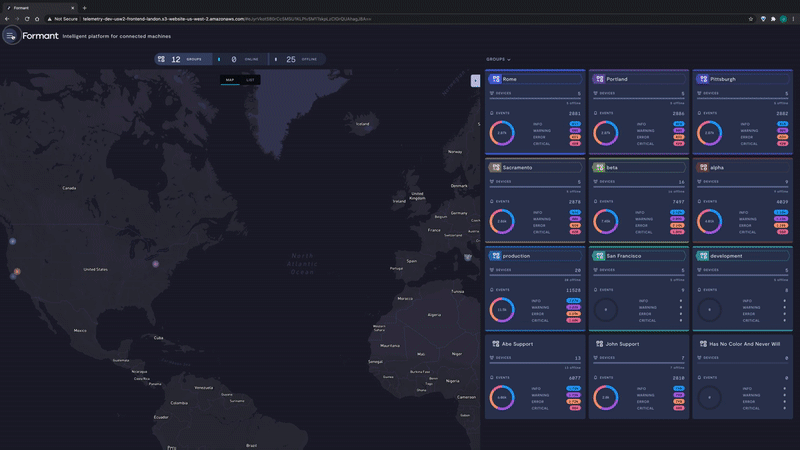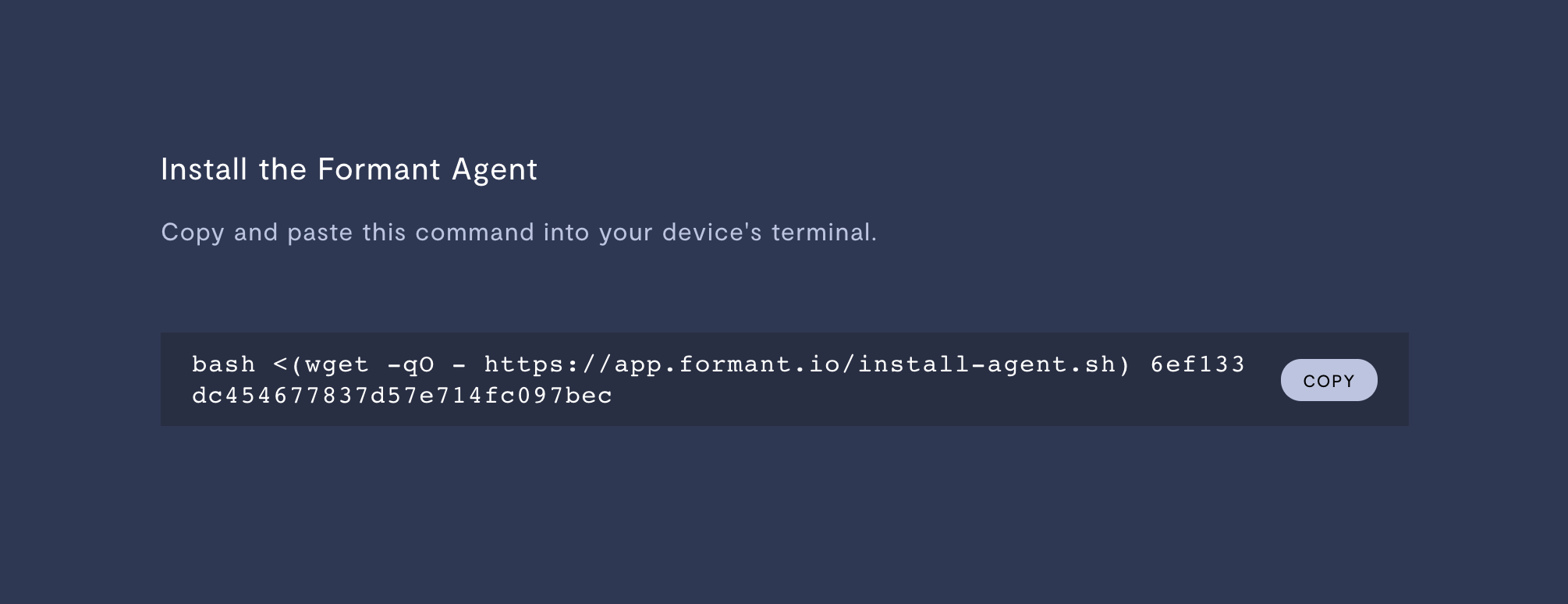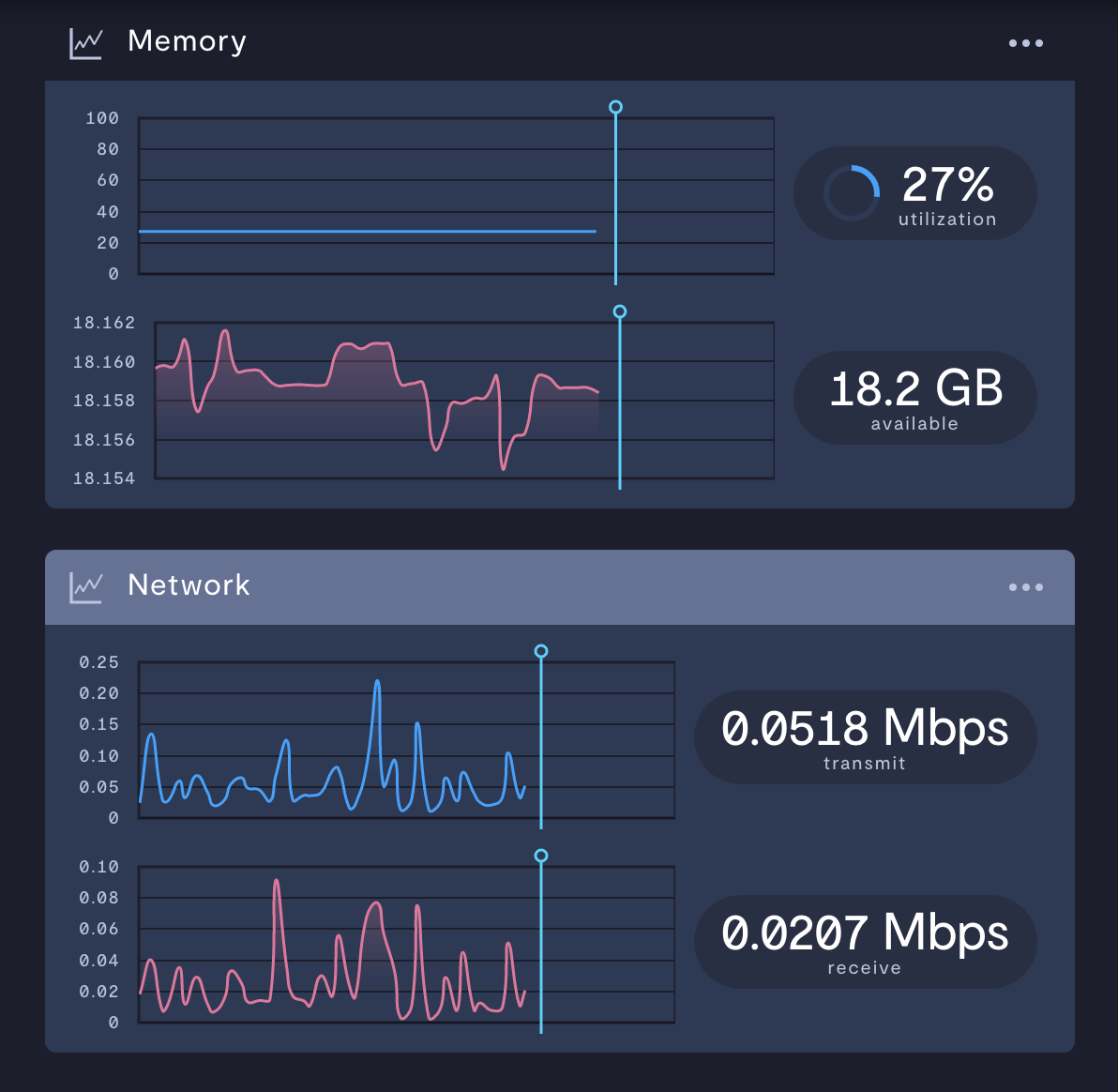Installing the Formant agent
This document describes how to perform a standard installation of the Formant agent onto a target device.
Prerequisites
Internet connectivity
The target device must have connectivity to
app.formant.ioandapi.formant.io.You can run the following script on your device terminal to output the robot's details and verify prerequisites:
bash <(wget -qO - https://app.formant.io/device-check.sh)
Supported architecture and OS
This how-to assumes that the target device is Linux-based. We currently support
xenial,bionic,focal,stretch,buster, andbullseyeonamd64,arm64.32-bit
armarchitectures are no longer officially supported for standard installations, although the Formant team can create a build as needed for your project.
Terminal access
To install the Formant agent on the target device, you must have terminal access to the device and the ability to run commands.
Standard Installation
Step 1: Add device
If this is the first device for your organization, you will be prompted to "Add device" from the signup screen. For subsequent devices, do the following:
Open the Formant sidebar using the top-left button. Select "Settings" ⇒ "Devices" ⇒ "Add device".

How to navigate to the "Add device" workflow
Or, visit this link to jump directly to device creation for your organization: https://app.formant.io/create-device
Step 2: Enter basic configuration for the device
A device is identified by a name. The name can be changed anytime but must be alphanumeric with characters a-z, A-Z, 0-9, dash (-), underscore (_), and dot (.).
Advanced details
- Enable/disable SSH - SSH is enabled by default, which means that you can use our terminal UI to SSH into the device. If this is a feature you do not want, you can disable it at the agent level by disabling SSH on this menu.
- Add tags to the device - Tags are metadata that index telemetry data ingested from the device. They are also used for grouping devices.
- Apply configuration templates already available within the org - If you have other similar devices in this org, you can make configuration a lot easier by creating configuration templates from those devices and apply that template to this device.
- Auto-configure this device - If you choose auto-configure, Formant will choose a set of streams and configure/ display a certain way.
Step 3: Install the Formant agent
Copy the installation command from the web application and paste it in the target device's terminal. Note the installation command contains of a provisioning token that is unique to the device and expires after 72 hours.

Copy and paste the command from the Formant website to your device's terminal
Run the script to begin agent installation.
As part of the installation, you will be prompted to optionally enter the absolute path to your ROS catkin workspace. Configuring your catkin workspace path will allow Formant to ingest data using custom ROS message types.
If you are not using a ROS catkin workspace, skip this step without entering a path by pressing the down arrow key to select and then pressing enter.

Example absolute path to catkin workspace
Step 4: Verify successful installation
If the Formant agent has been installed and connection established, Formant will begin ingesting telemetry for default streams like CPU, Network, Memory, and Disk. Verify that these streams have live telemetry data in the device's telemetry page.
To navigate to a device's telemetry page, open the Formant sidebar using the top-left button, and click on the name of your device under the "Observe" tab.

Telemetry being uploaded to a default stream
Updated about 2 years ago
